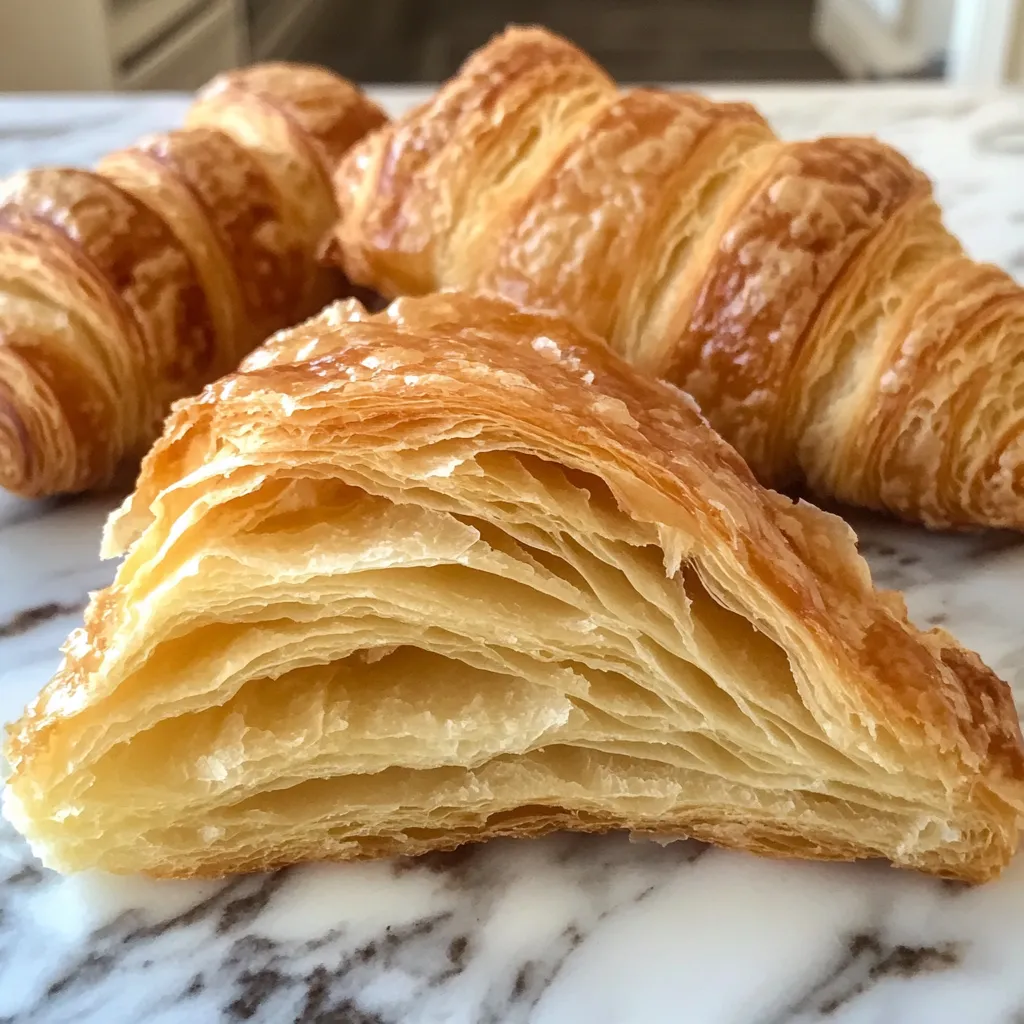 Pin
Pin
Classic French croissants are the pinnacle of breakfast pastry making. These delicate, buttery crescents feature dozens of flaky layers that shatter beautifully with each bite. When baked to golden perfection, they fill the kitchen with an intoxicating aroma that makes weekend mornings feel extra special.
After testing countless variations in temperature and technique, achieving that perfect honeycomb interior structure feels like pure kitchen magic. The telltale crackle of the crust and tender, airy crumb inside signal croissant perfection.
Key Ingredients
- Butter: Choose European-style for optimal flakiness
- Flour: Standard all-purpose flour works beautifully
- Yeast: Active dry or instant both yield great results
- Milk: Full-fat provides best flavor and texture
- Salt: Essential for proper fermentation and taste
- Sugar: Aids browning and creates tenderness
 Pin
Pin
Step-by-Step Method
- Step 1:
- Start with ingredients at proper temperature
- Step 2:
- Mix dough until properly developed
- Step 3:
- Rest dough before rolling
- Step 4:
- Prepare butter block at ideal temperature
- Step 5:
- Roll with even pressure throughout
- Step 6:
- Create precise folds and angles
- Step 7:
- Chill between lamination steps
- Step 8:
- Cut dough cleanly and evenly
- Step 9:
- Shape with gentle tension
- Step 10:
- Proof until properly risen
Traditional French croissant making is an exercise in precision and patience. The techniques passed down through generations of bakers hold the keys to achieving that perfect flaky texture.
Make-Ahead Instructions
- Step 1:
- Complete lamination day before baking
- Step 2:
- Shape and refrigerate overnight
- Step 3:
- Bring to room temperature gradually
- Step 4:
- Bake when fully proofed
- Step 5:
- Time baking for optimal serving
 Pin
Pin
Mastering homemade croissants elevates any baker's skills. While the process requires attention to detail, the satisfaction of creating these iconic French pastries makes the effort worthwhile.
Frequently Asked Questions About the Recipe
- → Why is letting the dough rest overnight important?
- Letting the dough sit overnight helps the butter stay firm and gives the gluten time to relax. This makes it much easier to roll and shape.
- → Can I store croissants in the freezer?
- Definitely! Just freeze unbaked croissant shapes for up to three months. Thaw in the fridge overnight before proofing and baking.
- → Does butter temperature really matter?
- Yes! If it’s too soft, butter will soak into the dough. It needs to be cold but bendable to form distinct layers.
- → How do I check if croissants are proofed enough?
- They’re ready when they’ve doubled in size and feel soft and airy when pressed lightly.
- → Is using salted butter okay?
- Try to stick with unsalted butter so you control the amount of salt in the recipe for a better balance.
